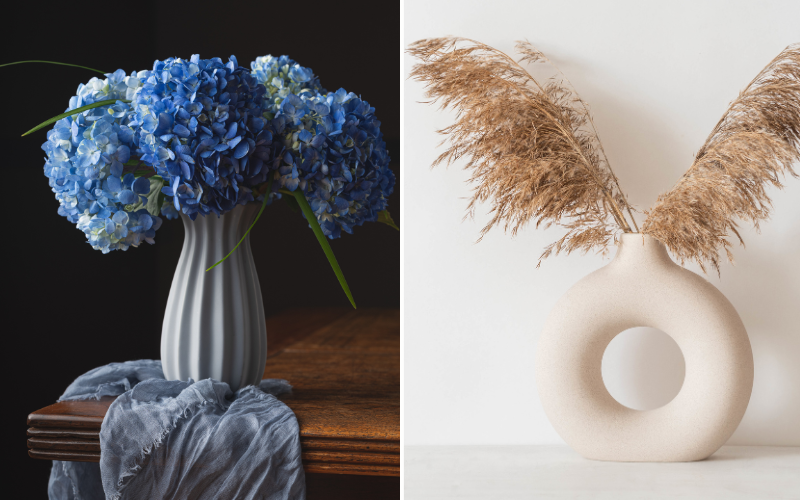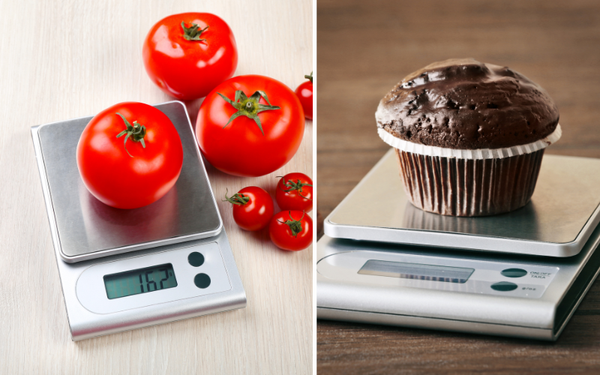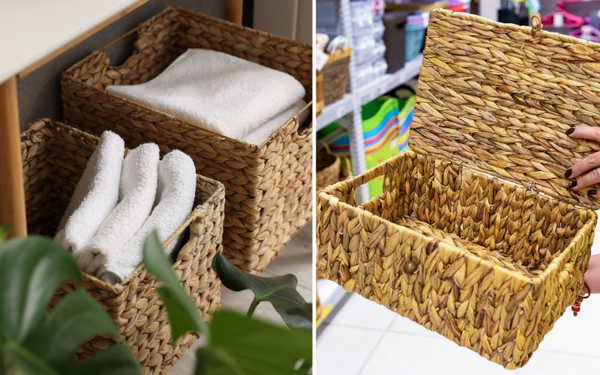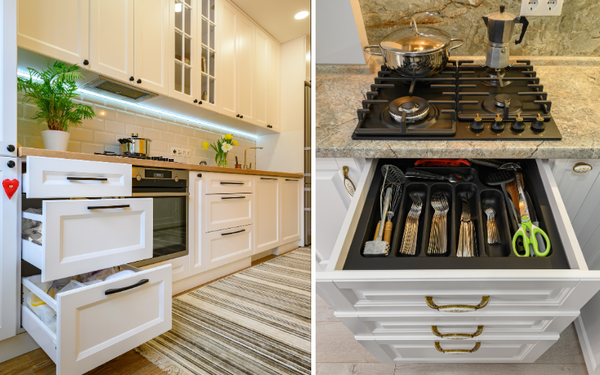What is the difference between ceramic and porcelain vases? This question reflects a common uncertainty regarding these two distinguished types of vases, each celebrated for unique qualities. Ceramics offer a broad range of textures and are fashioned from various types of clays and firing conditions, resulting in diverse and approachable pieces. Porcelain stands out for its refined, glass-like finish and impressive durability, attributes achieved through high-temperature firing. We will guide you through understanding these distinctions, ensuring you can appreciate and identify each type at a glance.
Key Takeaways
- Ceramic vases are made from natural clay, organic materials, and water, varying in hardness and porosity, while porcelain vases consist of a mixture of clay, kaolin, quartz, and feldspar, which gives them translucency and strength due to high firing temperatures.
- The glazing process in ceramics adds color, texture, and finish to vases, with various techniques employed to achieve unique effects; whereas the high temperature firing of porcelain produces a vitrified, translucent quality enhancing its elegance.
- Porcelain vases are highly durable and less porous, making them ideal for handling liquids and easy to maintain their aesthetic appeal with gentle cleaning, while ceramic vases require cautious cleaning due to their porous nature but offer charm with their rustic and artisanal appearance.
Exploring the Essentials of Ceramic and Porcelain Vases
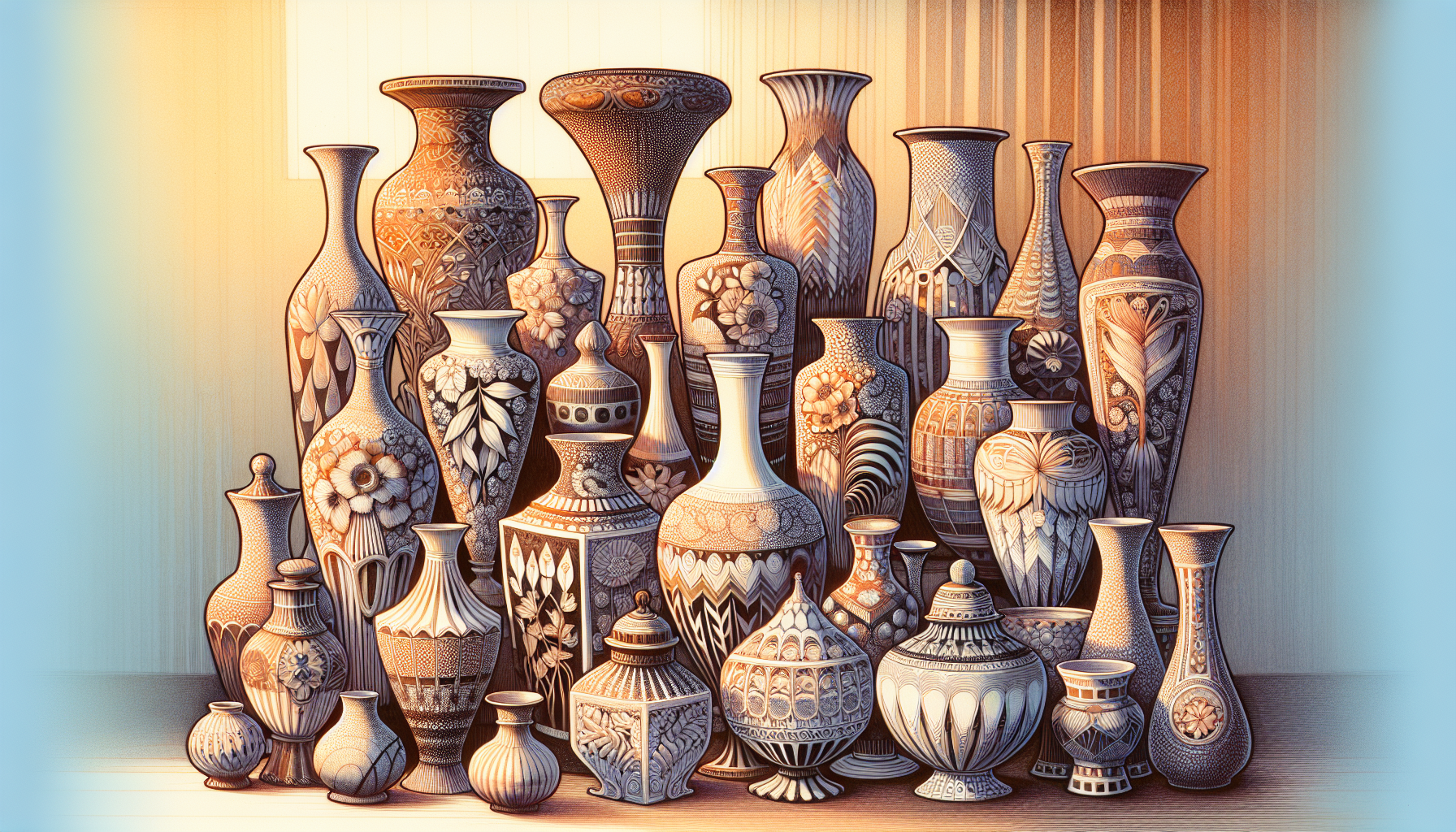
While ceramic and porcelain vases may look alike, they have distinct inherent qualities. Pottery, including ceramic vases, typically comprises natural clay, organic materials, and water, forming a diverse range from earthenware to stoneware. On the other hand, porcelain vases are crafted from a complex mixture including:
- clay
- kaolin
- silica
- quartz
- feldspar
This soft paste mixture lends them their signature translucency and strength.
Material composition and firing temperatures primarily differentiate ceramic and porcelain. Ceramics, encompassing a broad category from earthenware to stoneware, require different firing temperatures, directly influencing their durability. In contrast, porcelain necessitates extremely high firing temperatures due to its unique composition, resulting in a denser and more durable product.
The Composition Journey: From Clay to Vase
The transformation from raw material to a finished vase marvelously showcases the blend of artistry and science in pottery. Each piece, whether ceramic or porcelain, begins its life as clay, chosen and prepared with care to create the desired aesthetic and functional properties.
Ceramic vases are born from natural clay, combined with water and sometimes organic materials to add distinct characteristics. The quality and hardness of the vase are determined by the mix of clays used, the additives, and the firing conditions involving ceramic materials.
Porcelain, on the other hand, is known for its use of kaolin clay, a pure white material requiring extremely high firing temperatures, unlike bone china.
Natural Clay in Ceramics
Natural clay forms the heart of ceramics, offering a diverse palette for the creation of earthenware, stoneware, and terra cotta vases. The broad selection of clay bodies available to ceramicists, sourced from river banks, lake shores, or glacial deposits, allows for enhanced diversity in the types of ceramic vases produced. Each source contributes unique traits to the clay, influencing its texture, color, and durability. In addition to natural clay, natural stone can also be used as a material for creating beautiful and unique vases.
The design styles of ceramic vases and flower pots range from traditional to modern, providing options to match a variety of decor preferences. Each piece, whether it’s a terracotta flower pot or a sophisticated stoneware vase, bears the signature of its maker and the unique characteristics of the clay used. Crafted to perfection, these ceramic pieces contribute a rustic charm to any home decor setting.
Kaolin Clay's Role in Porcelain
Highly-pure Kaolin clay is a crucial ingredient in the making of porcelain vases. Often mixed with other natural materials like feldspar, quartz, and petuntse, kaolin clay is the key to porcelain’s signature qualities, including its dense, vitreous surface, and its delicate translucency.
The intricate process of crafting porcelain vases necessitates the following steps:
- Firing kaolin clay at extremely high temperatures, close to its melting point.
- This technique results in porcelain’s glass-like quality and translucency, allowing light to pass through and lending it a delicate and refined visual appeal.
- These properties distinguish porcelain from other ceramics, making it highly sought-after for its elegance and durability.
Aesthetic Appeal: Glaze and Translucency
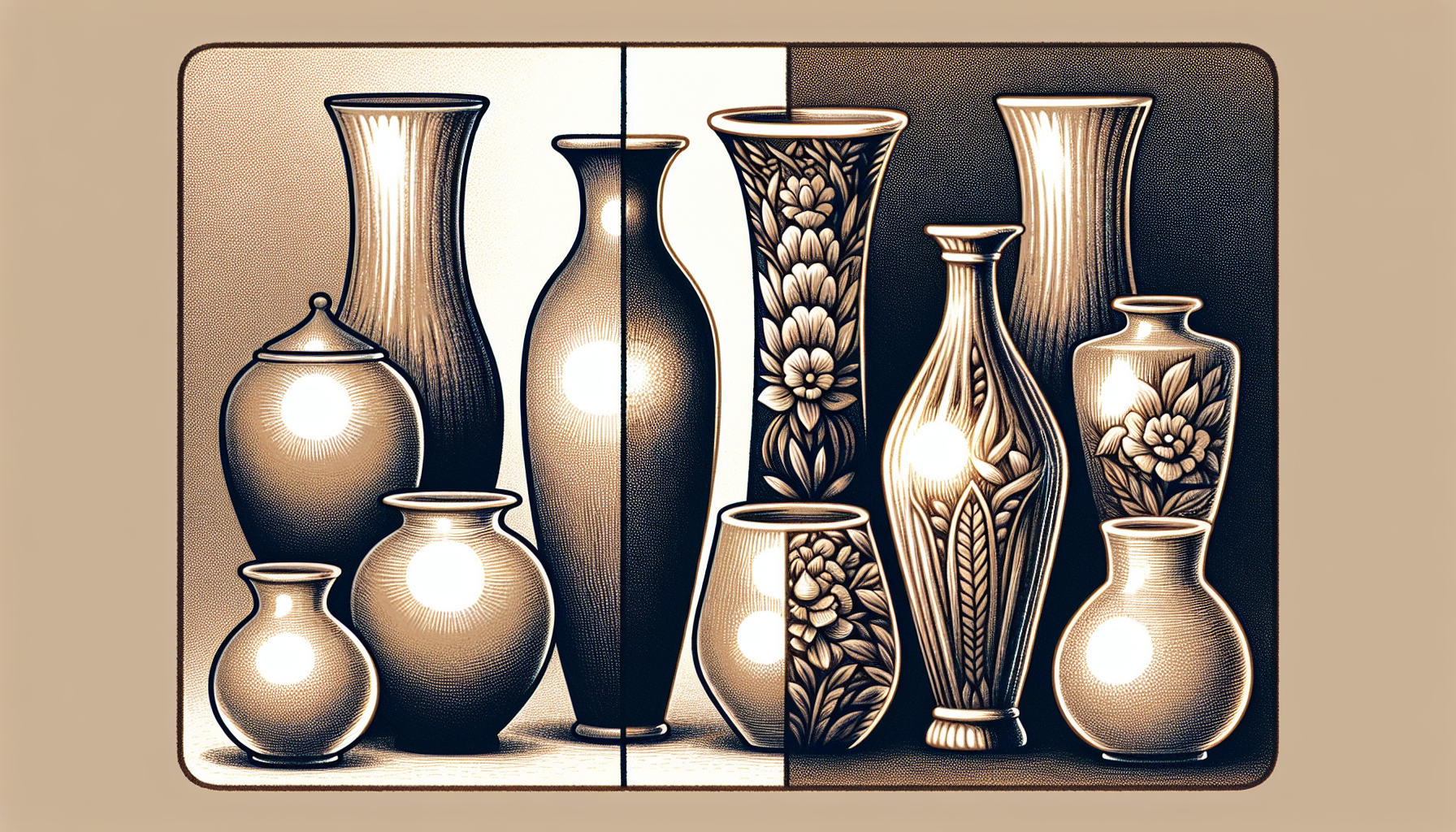
Glaze and translucency greatly contribute to the aesthetic allure of ceramic and porcelain vases. The glaze, which can range from glossy to matte, brings a unique vibrancy to ceramic pieces. On the other hand, the translucency of porcelain allows light to pass through, enhancing its delicate and fine appearance.
The diverse array of visual experiences offered by ceramic vases is largely due to their various glazes. The glaze, added to the surface of the vase after its initial firing, brings color, texture, and finish to the piece, creating a unique aesthetic appeal. In contrast, the notable translucency of porcelain vases, achieved by firing at extremely high temperatures, gives them a delicate and fine appearance, adding to their desirability.
The Shine Factor: Glazing Techniques
Glazing techniques significantly contribute to the visual aesthetics of ceramics. The glazes add color, texture, and create either a glossy or matte finish, depending on the desired look.
- Gloss glazes produce a shiny, reflective surface.
- Matte glazes result in a dull finish.
- Satin matte glazes create a semi-glossy touch that is smooth to the touch.
Unique colors and textures on ceramic and porcelain vases are achieved through various glazing techniques. These techniques include:
- Dipping
- Dripping
- Pouring
- Brushing
- Spraying
- Splattering
- Stippling
- Sponging
- Glaze trailing
- Wax resist
The optimal glaze effect is achieved through a kiln firing process where the glaze melts and forms a glassy surface on the bisque-fired ware, contributing to the vase’s unique charm.
Allowing Light: Porcelain's Translucent Properties
Porcelain’s unique ability to transmit light lends it a delicate and refined visual appeal, distinguishing it from other ceramics, including porcelain tiles. This translucency, allowing light to pass through, is due to its specific composition and meticulous firing process that brings the material close to its melting point.
Porcelain’s translucent properties enhance its elegance, rendering it ideal for crafting sophisticated and refined decorative pieces, such as translucent porcelain vases. When held up to the light, the porcelain vase’s body vitrifies, illuminating its intricate details, revealing the skilled craftsmanship that went into its creation, and enhancing its overall beauty.
Durability and Use: Which Vase Suits Your Home?
Durability and aesthetic appeal are primary considerations when selecting an ideal vase for your home. Porcelain vases are known for their inherent durability, largely due to the presence of melted components such as mullite and quartz. They have a low water absorption rate, contributing to their high durability. Despite this, they require gentle handling to prevent chipping or cracking.
Ceramic vases, on the other hand, offer a charming blend of rustic appeal and durability. Made from clay and baked at lower temperatures, ceramic vases have a porous nature that contributes to their artisanal appeal. Despite their porous nature, they can last for decades due to their increased resistance to breakage and ability to withstand heat.
Inherently Non-Porous Porcelain
Porcelain’s inherent non-porosity contributes significantly to its durability. The presence of mullite and quartz, which melt during the high-temperature firing process, strengthens the material, making it denser and more durable than other ceramics. The dense and vitrified nature of porcelain’s clay body results in a low water absorption rate, further enhancing its durability and lending it a translucent quality.
The smooth and vitreous surface of porcelain makes it less likely to stain, making it ideal for handling liquids. This property, combined with its durability, makes porcelain vases a practical and elegant option for home decor, balancing functionality and aesthetic appeal in a remarkable way.
Ceramic's Charming Imperfections
Ceramic vases, with their rustic charm and artisanal appeal, offer a warm and inviting aesthetic to any home decor. These vases are made from red or white clay, baked at lower temperatures, resulting in a porous nature that contributes to their unique charm. Despite their porous nature, ceramic vases can last for decades due to their increased resistance to breakage and their ability to withstand heat. Some key features of ceramic vases include:
- Rustic charm and artisanal appeal
- Made from red or white clay
- Baked at lower temperatures
- Porous nature
- Increased resistance to breakage
- Ability to withstand heat
These features make ceramic vases, often crafted from china stone, a popular choice for home decor.
While ceramic vases must be glazed for use with liquids due to their inherent porosity, this does not detract from their appeal. Instead, it adds to their charm, making each piece unique. The unique qualities of ceramic vases, including their imperfections and fragility compared to other materials, are part of their charm and desirability for home decor.
Care and Maintenance: Keeping Your Vases Timeless
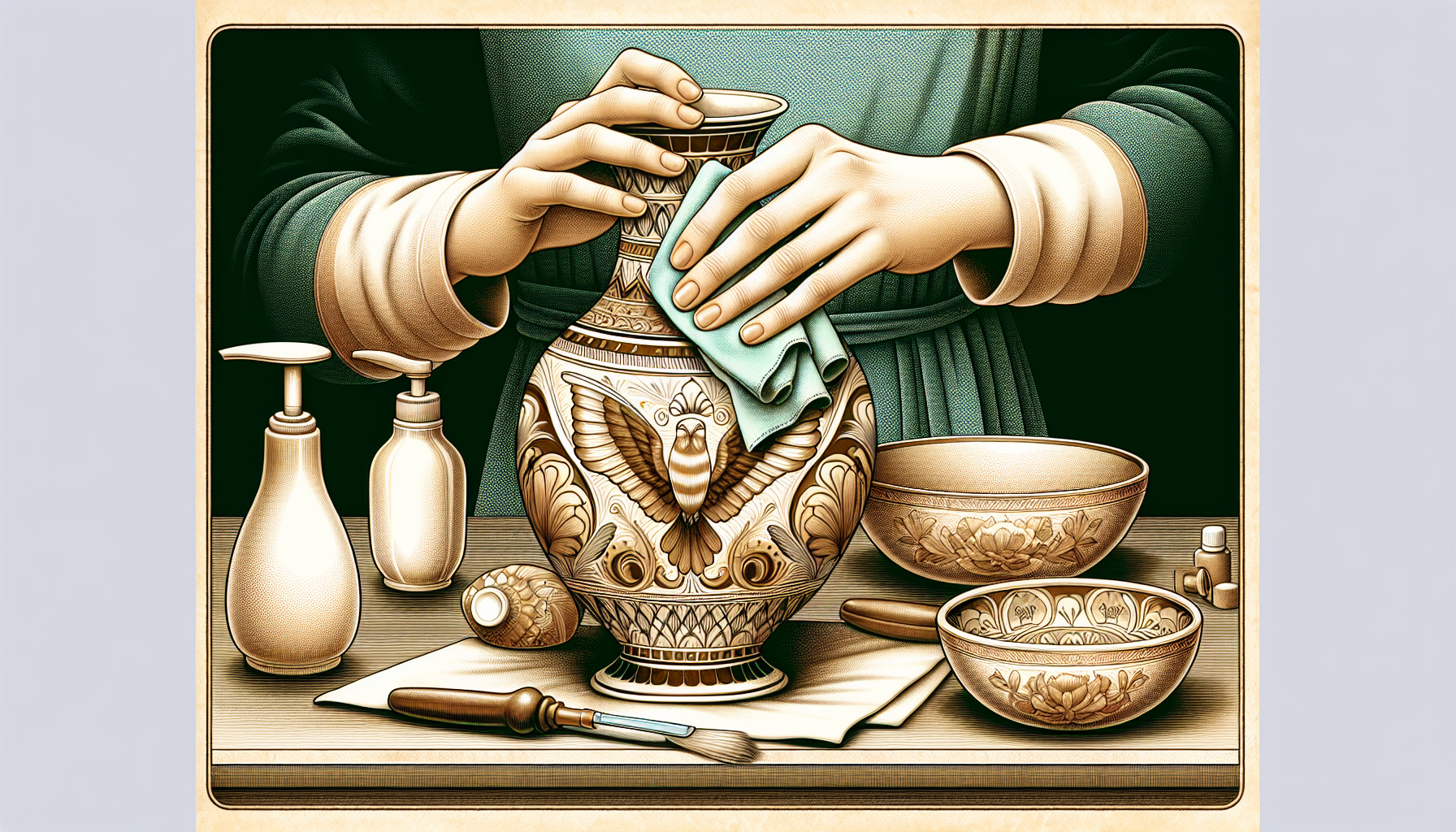
Preserving the beauty and functionality of your ceramic and porcelain vases requires proper care and maintenance. Cleaning vases requires gentle handling using soft tools and mild cleaning solutions. Aggressive scrubbing tools should be avoided to prevent damage, and ceramic vases that have been bisque fired should not be submerged in water to prevent moisture retention and potential paint damage.
To protect the vases from dust accumulation, regular dusting with a soft microfiber cloth is recommended. A soft, lightweight brush can be used during maintenance to delicately remove dirt or dust from tiny holes or hard-to-reach crevices. General care for vases includes:
- Avoiding rapid temperature changes
- Hand washing
- Cleansing after use
- Ensuring that if used for food, they are safe for such use.
Porcelain Vase Care
Porcelain vases can be effectively cleaned with the following steps:
- Use mild soap and warm water to eliminate dirt and debris.
- Avoid using abrasive cleaners to preserve their appearance and finish.
- Regularly dust the porcelain vases using a soft, dry cloth to avoid the accumulation of dirt.
By following these steps, you can ensure that the beauty and elegance of your porcelain vases are maintained over time.
Porcelain’s inherent non-porosity makes it less likely to stain, making it ideal for handling liquids. However, it’s essential to handle these vases with care to prevent chipping or cracking. Ensuring that they are kept clean and dry will preserve their aesthetic appeal and extend their lifespan, making them timeless decorative pieces for your home.
Ceramic Vase Care
While ceramic vases boast rustic charm and durability, they necessitate specific care for preserving their beauty. Here are some tips for caring for ceramic vases:
- Clean stains and odors by using a mixture of warm water and vinegar.
- Rinse off soaps and detergents from vases with crazing immediately to protect against cleaning solution seepage and water damage.
- Use glass votives for fresh flowers to prevent moisture seepage through glaze cracks.
By following these tips, you can keep your ceramic vases looking beautiful for years to come.
Ceramic vases should be kept in a clean, dry environment, shielded from direct sunlight to prevent the discoloration and degradation of the material. Regular cleaning with mild soap and warm water, along with immediate drying, will ensure that your ceramic vase remains a beautiful and charming addition to your home decor for years to come.
The Artisan Touch: Skilled Craftsmanship Behind Vases
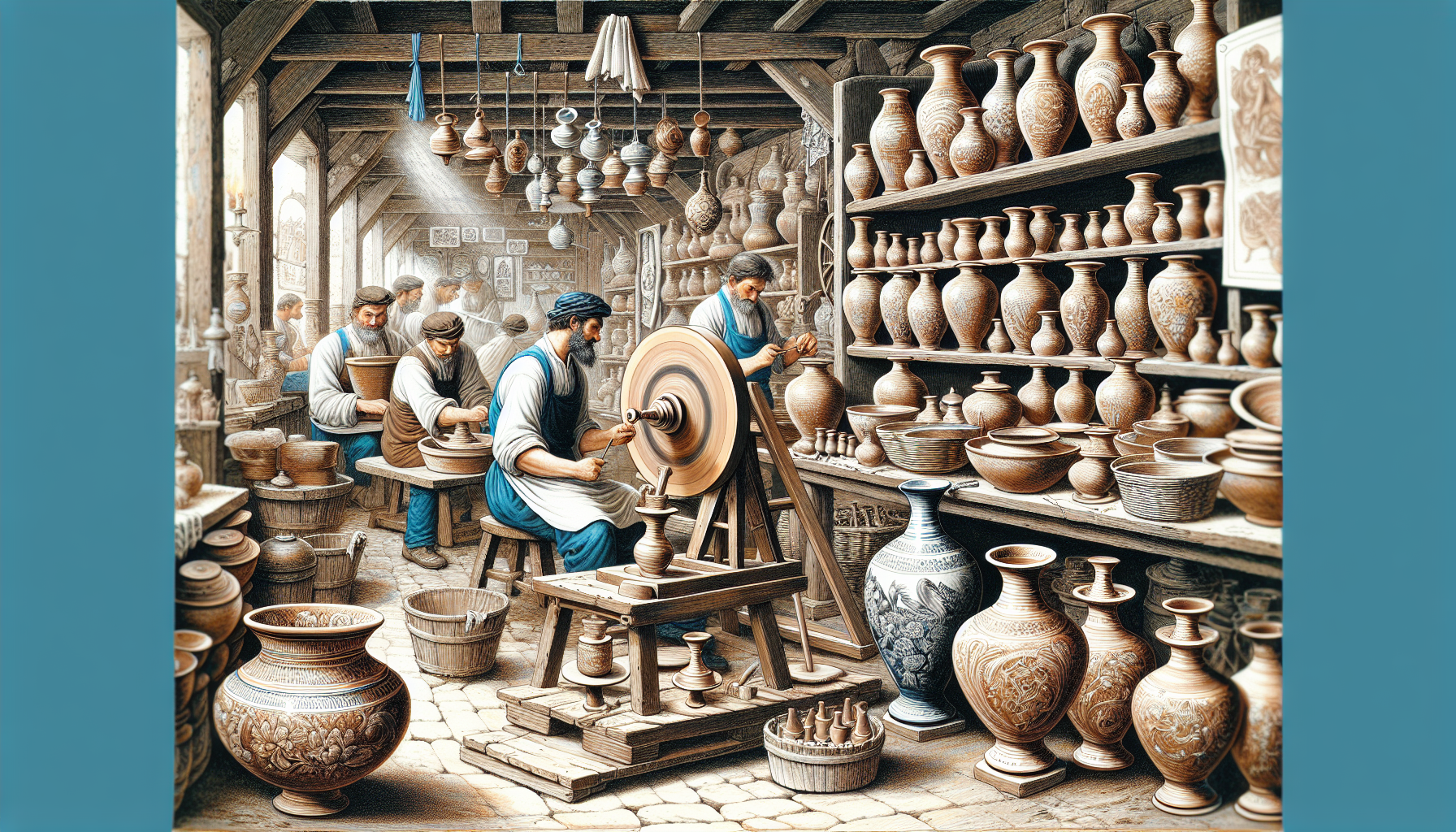
Each ceramic and porcelain vase encapsulates a tale of skilled craftsmanship and artistic vision. These vases are not merely decorative pieces, but a testament to the artistry and skill of the artisans who create them. The crafting techniques for porcelain vases involve precision and expertise, requiring an understanding of the material to create high-quality pieces.
During the vase making process, artisans engage with the material in an intuitive manner, allowing their personal touch and emotions to influence the final shape and design of each piece. This artisan touch adds a unique charm to each vase, making it more than just a decorative piece, but a work of art that reflects the artisan’s skill and creativity.
Crafting Porcelain Elegance
Creating porcelain vases is a meticulous process requiring a balance of technical skill and artistic vision. Porcelain vases undergo high-temperature firing at approximately 1300 degrees Celsius, a crucial firing temperature to ensure their enhanced durability and distinct visual appeal.
Artisans utilize a pottery wheel to form different parts of the vase and make use of tools like metal ribs for shaping the body and saw blades for making precise cuts. The attachment of bases and necks, experimenting with the height and proportions, and the application of a unified single layer of glaze are all part of the intricate process that results in a harmonious and elegant design.
Molding Ceramic Beauty
In contrast, crafting ceramic vases requires traditional handbuilding techniques like pinching, coiling, and slab construction. Using local clays sourced directly from the ground, artisans mold and shape the material, infusing each piece with a unique quality and character.
Handcrafted ceramic vases are valued not only for their durability but also for their unique quality. Each vase reflects the hands-on approach taken during its creation, bearing the marks of the artisan’s craftsmanship. These charming imperfections add character to each piece, making it not just a vase, but a work of art that brings warmth and character to any home decor setting.
Summary
In conclusion, the beauty and charm of ceramic and porcelain vases lie not just in their aesthetic appeal but also in the intricate processes that go into their creation. From the choice of clay to the firing temperatures, from the glazing techniques to the artisan’s touch, each step in the process contributes to the final piece’s unique character. Understanding the differences between ceramic and porcelain, their unique properties, and the care they require can enhance our appreciation of these beautiful pieces and help us make informed choices when adding these timeless pieces to our home decor.
Frequently Asked Questions
What is the main difference between ceramic and porcelain vases?
Ceramic vases are made from natural clay and fired at lower temperatures, while porcelain vases are made from kaolin clay and require extremely high firing temperatures.
Why are porcelain vases translucent?
Porcelain vases are translucent because of the composition of kaolin clay and the high-temperature firing process, which allows them to vitrify, letting light pass through.
How should I clean my porcelain vase?
To clean your porcelain vase, use mild soap and warm water, avoiding abrasive cleaners, and regularly dust with a soft, dry cloth to prevent dirt accumulation. This will help maintain its beauty and longevity.
Are ceramic vases durable?
Yes, ceramic vases are durable and can withstand heat, making them long-lasting with proper care.
What makes each ceramic vase unique?
Each ceramic vase is unique due to the handcrafted nature, traditional techniques, choice of clay, handbuilding techniques, and unique glaze used by artisans. These factors contribute to each piece's distinct character and charm.
You Might Also Like...
